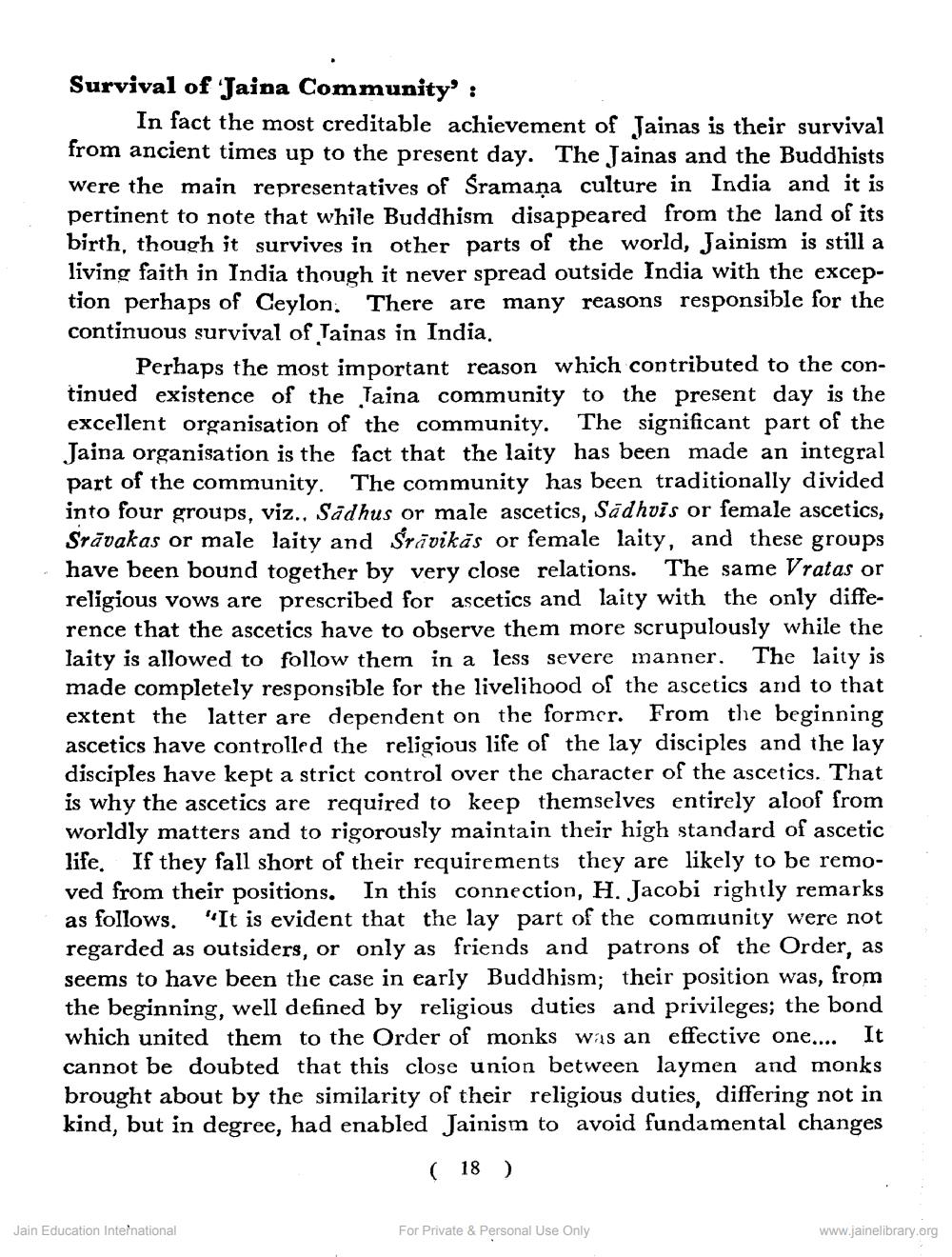________________
Survival of Jaina Community' :
In fact the most creditable achievement of Jainas is their survival from ancient times up to the present day. The Jainas and the Buddhists were the main representatives of Sramana culture in India and it is pertinent to note that while Buddhism disappeared from the land of its birth, though it survives in other parts of the world, Jainism is still a living faith in India though it never spread outside India with the exception perhaps of Ceylon. There are many reasons responsible for the continuous survival of Tainas in India.
Perhaps the most important reason which contributed to the continued existence of the Taina community to the present day is the excellent organisation of the community. The significant part of the Jaina organisation is the fact that the laity has been made an integral part of the community. The community has been traditionally divided into four groups, viz., Sadhus or male ascetics, Sadhuis or female ascetics, Srāvakas or male laity and Srāvikās or female laity, and these groups have been bound together by very close relations. The same Vratas or religious vows are prescribed for ascetics and laity with the only difference that the ascetics have to observe them more scrupulously while the laity is allowed to follow them in a less severe manner. The laity is made completely responsible for the livelihood of the ascetics and to that extent the latter are dependent on the former. From the beginning ascetics have controlled the religious life of the lay disciples and the lay disciples have kept a strict control over the character of the ascetics. That is why the ascetics are required to keep themselves entirely aloof from worldly matters and to rigorously maintain their high standard of ascetic life. If they fall short of their requirements they are likely to be removed from their positions. In this connection, H. Jacobi rightly remarks as follows. "It is evident that the lay part of the community were not regarded as outsiders, or only as friends and patrons of the Order, as seems to have been the case in early Buddhism; their position was, from the beginning, well defined by religious duties and privileges; the bond which united them to the Order of monks was an effective one.... It cannot be doubted that this close union between laymen and monks brought about by the similarity of their religious duties, differing not in kind, but in degree, had enabled Jainism to avoid fundamental changes
( 18 )
Jain Education Inteinational
For Private & Personal Use Only
www.jainelibrary.org




